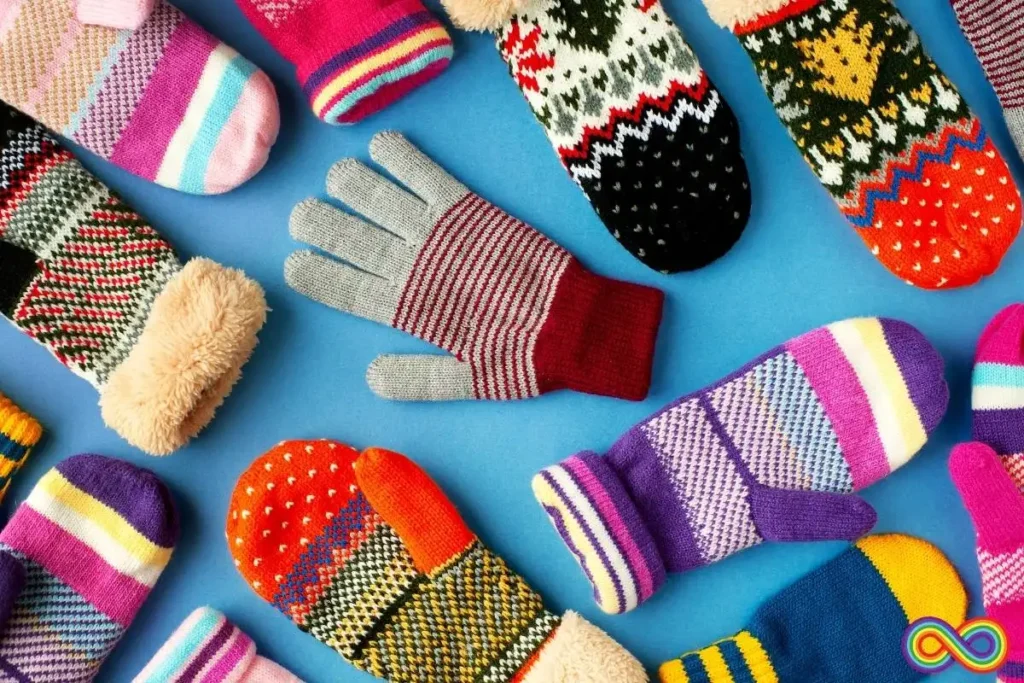Sensory gloves are wearable technology that can detect and interpret various sensory data, such as pressure, temperature, and motion. These gloves are designed to enhance the wearer’s ability to interact with their environment by providing real-time feedback on the sensory data they are experiencing.
Sensory gloves have various applications in various industries, including healthcare, prosthetics, robotics, and virtual reality. For example, they can be used in healthcare to monitor patients’ vital signs or to assist with rehabilitation exercises. In prosthetics, sensory gloves can be used to provide feedback to amputees, allowing them to better control their prosthetic limbs.
One of the primary advantages of sensory gloves is that they can be customized to meet the specific needs of the wearer. For example, a glove designed for a musician may focus on detecting finger movements and providing feedback on the pressure being applied to the instrument. In contrast, a glove designed for a factory worker may focus on detecting temperature and pressure changes to ensure the worker’s safety.
Sensory gloves typically use a combination of sensors, such as flex sensors, force sensors, and temperature sensors, to detect and interpret sensory data. The data is then transmitted to a computer or other device, where it can be analyzed and used to provide feedback to the wearer.
Technological Components
Technological Components include:
1. Sensors
Sensory gloves are equipped with a range of sensors to detect and measure various physical parameters. These sensors are typically mounted on the fingers and palm of the glove and can be used to capture data such as finger position, orientation, and movement. Some gloves also include sensors that can detect pressure, temperature, and other environmental factors. The information collected by these sensors is then used to create a digital representation of the wearer’s hand movements.
2. Actuators
Actuators are used to provide feedback to the wearer of the sensory glove. These devices can be used to create a sensation of touch or pressure on the wearer’s fingers or to provide haptic feedback in response to a particular gesture or movement. Some gloves also include actuators that can be used to provide resistance or assistive force to the wearer’s hand movements.
3. Data Processing Units
The data processing unit is the brain of the sensory glove system. It is responsible for collecting and analyzing data from the sensors and actuators, and for translating this information into a format that can be used by other devices or applications. The data processing unit can be integrated into the glove itself or can be a separate device that is connected to the glove wirelessly or via a cable.
Applications
Sensory gloves have a wide range of applications in various fields such as virtual reality, rehabilitation, and human-computer interaction.
Virtual Reality
Sensory gloves are used in virtual reality to provide a more immersive experience. The gloves contain sensors that can detect the movement and position of the fingers, allowing users to interact with virtual objects more naturally.
For example, the “5DT Data Glove 5 Ultra” by 5DT Technologies includes a bend sensor on each finger, which can detect the bending of the fingers and provide haptic feedback to the user. This allows the user to feel the virtual objects they are interacting with, making the experience more realistic.
Rehabilitation
Sensory gloves are also used in rehabilitation to help patients recover from injuries or disabilities. The gloves can be used to monitor the movement and position of the fingers, allowing therapists to track the progress of their patients.
The gloves can also be used to provide feedback to the patient, helping them to improve their movement and coordination. For example, a study published in the journal Applied Sciences found that a smart tactile glove containing force and flex sensors could be used for haptic interaction, communication, and rehabilitation.
Human-Computer Interaction
Sensory gloves are used in human-computer interaction to provide a more natural and intuitive way of interacting with computers. The gloves can be used to control a computer mouse, keyboard, or other input device.
For example, a review published in the journal Sensors found that systems-based sensory gloves could be used for sign language recognition, allowing users to input text into a computer using sign language.
Design and Ergonomics
Sensory gloves are designed to be comfortable and easy to wear while also providing accurate and reliable sensory feedback. The gloves are typically made of soft, flexible materials such as fabric or silicone to ensure a snug fit and to allow for a wide range of motion. The use of soft materials also helps to reduce the risk of injury or discomfort during extended use.
The design of sensory gloves can vary depending on their intended use. For example, gloves used for hand rehabilitation may have built-in actuators that provide resistance or assistance during exercises, while gloves used for virtual reality applications may have embedded sensors that detect hand movements and provide haptic feedback.
Ergonomics is an important consideration in the design of sensory gloves. The gloves should be lightweight and should not impede the user’s natural movements. They should also be easy to put on and take off, with adjustable straps or closures to ensure a secure fit. Some gloves may also include additional features such as finger separators or padding to prevent discomfort or injury.
Challenges and Limitations
While sensory gloves have shown great potential in various applications, they still face some challenges and limitations. Some of these challenges are:
1. Accuracy
One of the main challenges of sensory gloves is the accuracy of the data they collect. The sensors used in these gloves can sometimes be affected by external factors such as temperature, humidity, and other environmental conditions, which can affect the accuracy of the readings. Additionally, the gloves may not be able to detect subtle movements or gestures, which can limit their usefulness in certain applications.
2. Cost
Another challenge of sensory gloves is their cost. These gloves can be expensive to produce and purchase, making them inaccessible to many people who could benefit from their use. Additionally, the cost of maintaining and repairing these gloves can be high, which can further limit their accessibility.
3. Comfort
Sensory gloves can also be uncomfortable to wear for extended periods. The sensors and other components used in these gloves can add weight and bulk, which can make them uncomfortable to wear for long periods. Additionally, the gloves may not fit properly, which can further reduce their comfort and usability.
4. Integration
Integrating sensory gloves with other technologies can also be a challenge. For example, integrating these gloves with virtual reality (VR) or augmented reality (AR) systems can be difficult due to differences in software and hardware compatibility. This can limit the usefulness of these gloves in certain applications.







